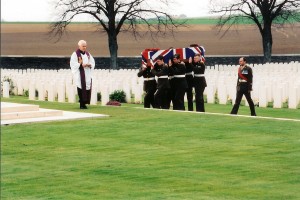US 1st Infantry Division
This Virtual Battlefield Tour presents the locations of the numerous commemorations in Europe to the men of the 1st Infantry Division.
Unit History:
The US 1st Infantry Division is the oldest division in the United States Army with units dating back to the American Revolution. It was the first American unit to arrive on the First World War battlefield. Units of the division fired the first artillery shot of the American Expeditionary Corps and suffered the first three soldiers killed. In 1918 it launched America’s first offensive operation against the Germans at Cantigny. In September the entire division was committed in the Battle of the Mihiel Salient and only two weeks later in the decisive Meuse-Argonne Offensive where it fought as far east as Sedan. The unit insignia provides its nickname as well, a ‘Big Red One’ on a brown/ grey background.
Motto: “No Mission Too Difficult, No Sacrifice Too Great—Duty First!”
View US 1st Infantry Division (WW I) – A Virtual Battlefield Tour by French Battlefields (www.frenchbattlefields.com) in a larger map


